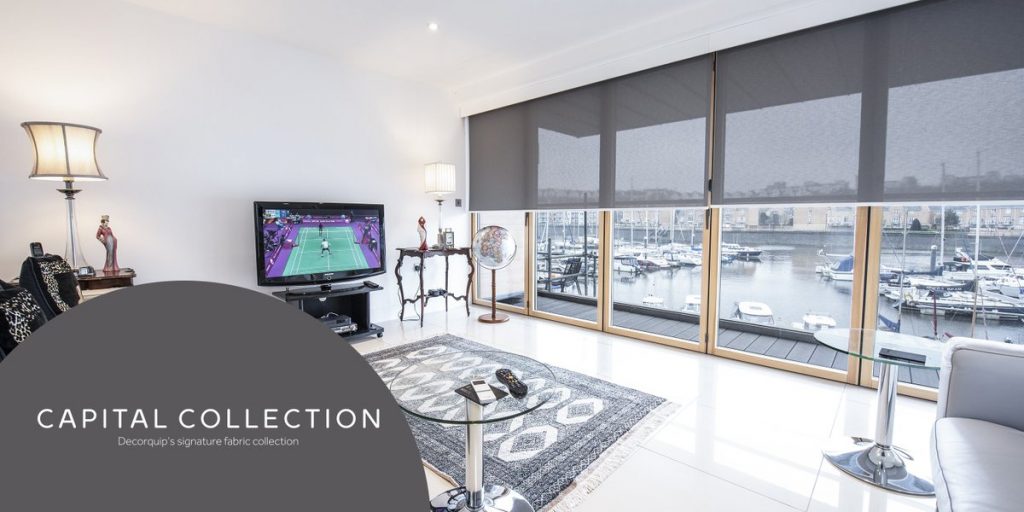You might remember a few weeks ago, we hosted our Dodging the Damp Expert Lock-In with damp-proofing and remedials veteran, Chris Reynolds.
Well squeezing such a broad topic into only an hour and a half was always going to be optimistic, but we never expected over 100 questions still waiting for an answer at the end of the webinar.
We couldn’t just let these disappear into thin air. Chris was kind enough to give us even more of his time to properly answer all your questions. With a lot of different areas covered, we’ve split these into the following categories: Educational, Ventilation, Insulation, Tenant & Landlord relationship, and Remedy & Prevention.
Educational
Let’s kick things off with some general educational questions on damp to whet your appetite.
Q: Estate agents usually claim damps as solely condensation in viewings. How do I distinguish between damp and condensation?
A: Condensation damp is due to air quality. Other types of damp are water leaks, rising damp, bridging damp, and penetrating damp. The structural damps require a specialist surveyor to diagnose correctly.
Q: What is the appropriate/optimum humidity % to avoid bacteria and viruses to breed? Is it different in Winter, Spring, Summer, Autumn?
A: There’s no difference for the various seasons. Ideal humidity parameters at anytime are between 40 – 60% RH. If maintained within this range, it is impossible for black mould to thrive.
Q: What are the current solutions for the solid brick walls, say built in 1930, to protect from damp?
A: Feel free to call to discuss 07775 927151.
Ventilation
It’s fair to say no one expects tenants to leave their windows open during the winter, but this webinar really showed there’s a hell of a lot more to ventilation than that. With it not being a one-size-fits-all policy, it was no surprise that you were chomping at the bit to ask Chris more questions in this area.
Q: What spec of Extractor fan would you recommend for an internal windowless bathroom? The standard ones are typically 40-50 Litres per minute.
A: Elta Mori dMEV HT II from Alliance Remedial Supplies.
Q:Would you recommend passive fans to reduce condensation in a Grade ii listed building?
A: Ventilation in Grade II listed properties is very challenging. Any changes to the façade of a listed property(i.e. ventilation grilles), require approval from a Conservation officer. Not sure what you mean by ‘passive’ fans? Feel free to call to discuss.
Q: Can I ask the tenant to change the filters to the extractor fan in the kitchen or change the batteries for the smoke alarm?
A: I do not advise you place the onus of maintenance of an electrical fan on a tenant. However, it’s not a problem for smoke alarm battery replacement.
Q: We have been told that most extractors are for reducing odour and not damp, is this true?
A: Completely incorrect information. The absolute primary function is the removal of excess airborne moisture. However, odours are carried in airborne moisture and will be carried out with it. I definitely would recommend you to have a look at Part F in the ventilation regulations which were mentioned in the webinar.
Q: Is Positive Input Ventillation (PIV) a dehumidifier?
A: No its not.
Q: I use Environment. They do fans at around £400 but the whole house one is around £1200.
A: Environment are very expensive. You are paying between £300 and £400 more than you need to just for a brand name.
Q: What PIV product would you recommend?
A: Airtech, Elta, Nuaire. Which you go for depends on the type of property, volume of air to be changed, and space available to install it.
Q: If the tenant keeps the internal doors closed, can positive input ventilation still work?
A: Incorrect. Provided a gap of 10mm is available at the bottom of the door to any given room, it will still work. That is an ideal dimension stated in all manufacturers data sheets, but between 5mm and 10mm is acceptable.
Q: In my HMO, in one of the tenant’s room, I have had a heat recovery ventilation system installed. I haven’t been in to inspect and the management agency is dealing with this. Is this machine a satisfactory solution? This machine has cost me £900 + vat. The tenant has also remarked it’s slightly noisy.
A: I wish you had got in touch with Alliance Remedial beforehand. A single room heat recovery fan should not cost £900 plus VAT. That is pretty expensive, and in standard idle mode, they are inaudible. When boost mode is engaged, it will sound like a standard extract fan. If the complaint is the fan is engaging boost mode, when they are sleeping then yes, it has not been installed correctly or is incorrectly specified.
Q: A damp specialist recently told me to tell my tenants to open the windows and put the heating – what can we say to that?
A: Ventilation and heating are key to reducing condensation. However, if tenants are worried about heating bills – they will do it in a limited fashion, and will definitely not open the windows! It is not as simple to say this to them – a damp specialist will not have said this in isolation, if indeed he is a specialist.
Insulation
And now it’s time for the antithesis of ventilation – insulation of course. Dodging the damp is about getting the right balance between these two factors, so it’s no surprise there were a lot of questions about keeping heat in your property too.
Q: I have a masionette with a lot of damp. It had cavity wall insulation fitted before I purchased it off the local housing association. They say they have no record of who fitted it – is it worth paying a company to remove this and is it very effective?
A: Remove it only if it is causing bridging damp. Typically, this will be because the mortar is breaking down. Walls that have received CWI do need to be maintained in good order. This prevents rainwater penetrating through the outer leaf coming into contact with the insulation’.
Q: Do you think investing in exterior wall insulation would solve, or at least improve the damp / mould situation inside the house?
A: It can help but insulation in isolation is not the cure. For making a given surface warmer, you simply move the moisture (condensation) to another wall/surface. The key is ventilation’.
Q: One of my properties supposedly has cavity wall insulation, but I get a lot of damp and condensation problems. I have emailed the previous owner to try and find out who put this in, and what the guarantee situation is. In short I have hit a brick wall, as they say they have no records, and do not know who put the cavity wall insulation in. I have replaced the glass to new style double glazing, but there’s been no difference.
My question – is it worth paying a company to completely remove this cavity wall insulation? ( being quoted £1500 – £2000)
A: Feel free to call to discuss 07775 927151. Fundamentally, the CWI industry went bust when the government stopped the grant subsidies. There will be next to no chance of a claim against a guarantee, as the installer will not be around. However, it is little known but there is a significant pot set aside for guarantee claims put in place by the government. Please refer to CIGA or look up ‘No win – No fee cavity insulation guarantee claims’. But you would have to prove the damp via the cavity insulation was due to poor installation work or into a wall that should never have received it. If on the other hand, the wall has not been maintained i.e. pointing kept in good order, you will struggle to win a claim. Remove it if you have had an inspection carried out which has proven the material is wet. The prices you have been quoted are either based on an M2 area or a day rate.
Tenant & Landlord Relationship
It can be difficult to know who’s accountable for damp problems. Education is key for reduction, but often you can be faced with very specific situations and it can be tricky to know what to do.
Q: I agreed to fix the damp problem for my tenant after we both agreed there was a problem, but she doesn’t give me a date for the fixtures to take place. How can I proceed?
A: I believe your tenancy agreement states that you need to have reasonable access to carry out routine checks and maintenance. Your managing agent should take care of this.
Q: We are putting digital hygrometers into our problem properties and educating the tenant as to how to keep the RH below 70% – only £15. It makes the tenant aware of the moisture they are generating.
A: Good step. It focuses their attention.
Q: I have tenants who pretend to open their windows when we visit. However, they are always closed when we drive past on other occasions. The wooden double glazed windows are starting to rot and the black mould is everywhere now
Any ideas gratefully accepted.
A: Opening windows or telling occupants to open windows is not a solution in itself but is part of the solution. Forgive my cheek, but if it is cold outside, would I drive past your house and see all your windows open? If one goes to court in a black mould litigation case, the judge would not rule in your favour – if this was used as part of your defence.
It is general practice to be carrying out all measures to make properties more energy efficient, which is the process of keeping the heat generated in a property, for as long as possible. Why carry out all the proposed measures, if we then tell tenants to open their windows? That said, of course there is a benefit to getting fresh air in via window openings, but it can only be done as a comfort measure. Feel free to call to discuss.
Q: With the government bringing a Epc C forward to 2025, I see a high rise coming in black mould resulting in claims against landlords. Try proving to council bodies it’s not damp and the tenants lifestyle. Many landlords have older 1900/1930 properties – I have for some time been putting extra loft and cavity wall insulation in and these type of properties are high risk for mould.
A: Kathy you have indirectly hit on a point that I used the webinar to focus on, but has not gone down too well. Post Grenfell, a lot of new legislation has been introduced to make Landlords more accountable for providing dwellings fit for purpose. My observations are taken from having surveyed thousands of properties, so I’m drawing from a lot of experience. As the rental market increases, so will the financial challenges of tenants who are not motivated to look after their rental property. The new legislation makes it easier for a tenant to take a Landlord to court. Without doubt, (because its already happening), a Judge, at a bear minimum will appease them , and offer them some kind of compensation. But why should it be a ‘fight’? Why would a property investor not take care of their investment and keep it in tip-top condition? Big problems to come for those who have been getting away with doing very little!
Remedy & Prevention
And now finally, some extra preventative measures that you can take as well as finding the balance between ventilation and insulation.
Q: Who do we call to have a look at an external wall and tell us if it needs repainting and how do we know if they should be using lime?
A: A local general builder is your man, but there are standard indicators. Look to see if mortar has eroded or is missing. If so, it will need repainting. Lime is only used if the existing mortar is lime (a good builder will identify this). No point putting lime mortar over cement and vice versa.
Q: Had 3 damp proofers out to a property, all of whom have advised to remove plaster, inject and then re-plaster!
A: Please call to discuss. Re-plastering is an old method which is fine, but all guidance documents for this method will tell you that you should not redecorate for between 6 – 9 months minimum. New methods and materials available and available through Alliance Remedial.
Q: What about white washed lime rendering on solid walls?
A: Why would you render? Is there render already on the walls? If not, what is the current mortar? If it is sand and cement mortar, the lime render will not be able to fully work as a breathable material, because the concrete mortar is not offering the breathability.
Q: What is the best antifungial paint brand please?
A: Suretherm from Alliance remedial.
Q: I had the flat roof of the porch come down and the walls in the porch had mould in the internal walls. What is the best action to take?
A: Very challenging! Porches are notoriously cold. They never get ventilated, as they generally don’t have a heater stick out from the main house like an appendage. This all means they’re very prone to condensation. Make the external brick in sound order and apply Dryfix masonry water repellent cream to the brickface. Then, apply two coats of Suretherm insulating paint to the internal wall.
And there we have it! The first webinar we’ve done that had so many questions, it warranted not one but two blog posts!
To see our breakdown of Chris’s webinar in our first blog post, click here













